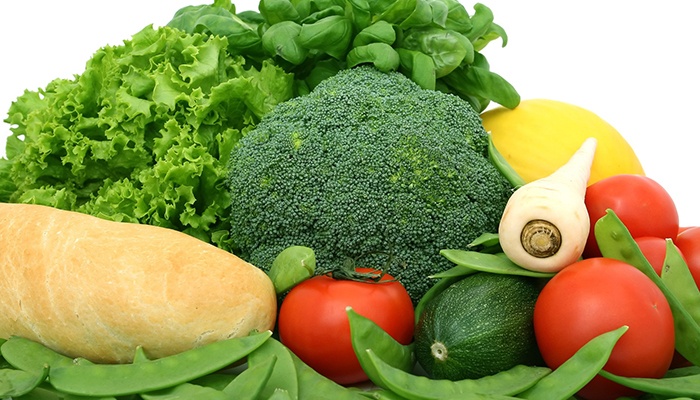Doctors and nutritionists tell us healthy eating is an important part of staying independent and engaged in our lives. But is healthy eating for older adults different than healthy eating in general? It turns out that yes, as we age our nutritional needs change, too.
According to The National Council on Aging’s Healthy Eating Tips for Seniors, while we may need fewer calories to match our less active lifestyles, we continue to need high-quality, and even more nutrient-dense foods as we age.
But preparing nutrient-dense, high-quality food can be difficult when struggling with issues of aging like arthritis, fatigue, and chronic illnesses.
So how do we make it easier to create healthy, appealing foods that follow the experts’ advice? Here are my ideas.
Ideas on Healthy Eating for Older Adults
- Stock kitchen with recommended nutrient-dense foods
- Plan meals and prepare foods ahead of time when possible
- Ease kitchen fatigue with low-cost, time-saving gadgets
Stock the Kitchen With Nutrient-Dense Food
What nutrient-dense foods do the experts recommend for healthy eating for older adults?
The National Institutes of Health recommends eating variety of nutrient-dense foods including:
- fruits and vegetables
- whole grains
- low-fat dairy (or alternative milks fortified with Vitamin D and calcium)
- seafood
- lean meats
- poultry
- eggs
- nuts and seeds
- legumes
NIH also recommends we eat less of these foods:
- high-calorie, low-nutrient foods like sugary drinks
- foods prepared with butter or other fats that remain solid at room temperature
- white bread and rice
- pasta made from refined grains

MyPlate (pictured at right) colorfully illustrates the relative amounts we should have of each food group: fruits, vegetables, grains, protein foods, and dairy. The American Heart Association lists suggested serving sizes. (Also, the experts remind us to drink enough fluids, especially water. Staying hydrated is especially important for older adults.)
The serving sizes surprised me. For example, one slice of bread is equal to one serving of grains. So if I make a sandwich, that’s two servings of grain. But using whole grain bread, I get the added nutrient-dense food benefits. And the guidelines provide for six servings of grains per day, so even though the portions seem smaller, we aren’t really missing out.
The National Council on Aging recommends a similar variety of nutritious foods. NCOA’s Healthy Tips for Seniors lists a variety of colorful fruits and vegetables in addition to lean protein like lean meats, seafood, eggs, and beans; whole grains like brown rice and whole wheat pasta; and low-fat dairy (milk and its non-dairy alternatives).
NCOA also advises us to chose foods that are high in fiber, low in sodium, and to look for Vitamin D as an ingredient. (NCOA says many older adults can be low in Vitamin D, so it’s a good idea to ask your doctor about this.)
Plan Meals and Prepare Foods Ahead of Time
I’ve spent a lot of time and energy growing fresh vegetables over the years, and even more time canning and freezing them to use throughout the year. Now that I am older, I still prepare some foods ahead of time. And I am always on the lookout for ways to make healthy eating for older adults as easy as possible.
I have more energy in the mornings, so I’ll prepare a couple of meals at once. For example, I can make healthy sandwiches ahead of time for lunch, salads for dinner, and get a head start on any other foods for the day. That way, as my energy wanes through the day, so does my workload.
For those with aging parents and friends, helping to prepare foods in advance is a great gift for older adults.
Kitchen Time Savers
So how else can we incorporate the experts’ guidelines of healthy eating for older adults into our actual day-to-day lives? I talk about some of my goals for healthy eating in my Vitamix journey. But I also have a few smaller and lighter appliances that I use to prepare healthy foods with minimal effort and clean up.
My Magic Bullet, Presto Salad Shooter, and Cuisinart Citrus Juicer are my favorite kitchen helpers. These small appliances relieve some of the extra effort required to prepare good food.
Check Helpful Kitchen Gadget prices on Amazon:
Sample Meal Made Easier with Kitchen Gadgets
We find having a few helpful kitchen gadgets can help us follow the experts’ recommendations of healthy eating for older adults.
For example, one of my favorite meals is this Pecan Fish recipe. The ingredient list reflects several of the experts recommendations: lean protein, nuts, and whole grains. Served with a colorful salad and a tall glass of water, I think it gets pretty close to what the experts want us to eat.
Preparing the Pecan Fish is made easier with the help of my Magic Bullet. Add a recommended grain of your choice and a colorful vegetable. I like to use my new Presto Professional Salad Shooter to quickly make a fresh salad to go with dinner. For a drink, I pour seltzer water and add a few citrus ice cubes made with my Cuisinart Citrus Juicer and/or freshly frozen berries, depending on the season.
Fish Fillets with Pecan Crunch Topping
Ingredients
- 2 Tbsp Dijon mustard
- 2 Tbsp butter, melted
- 4 tsp honey
- ¼ cup pecans, finely chopped in Magic Bullet
- 2 tsp chopped parsley
- ¼ cup fresh bread crumbs made in Magic Bullet
- 4 (6 oz) fish fillets
Mix the mustard, butter and honey in small bowl.
Mix bread crumbs, pecans and parsley in small bowl.
Season each fillet with salt and pepper and place in lightly greased shallow baking dish.
Brush each fillet with honey mustard mixture.
Top with bread crumb mixture.
Bake at 450°F for 10 minutes per one inch of thickness of fillets.
Do you have a favorite kitchen gadget that makes healthy eating for older adults easier?
Photo Credit: Robert-Owen-Wahl | Pixabay

